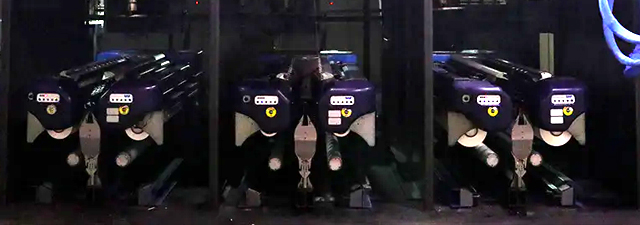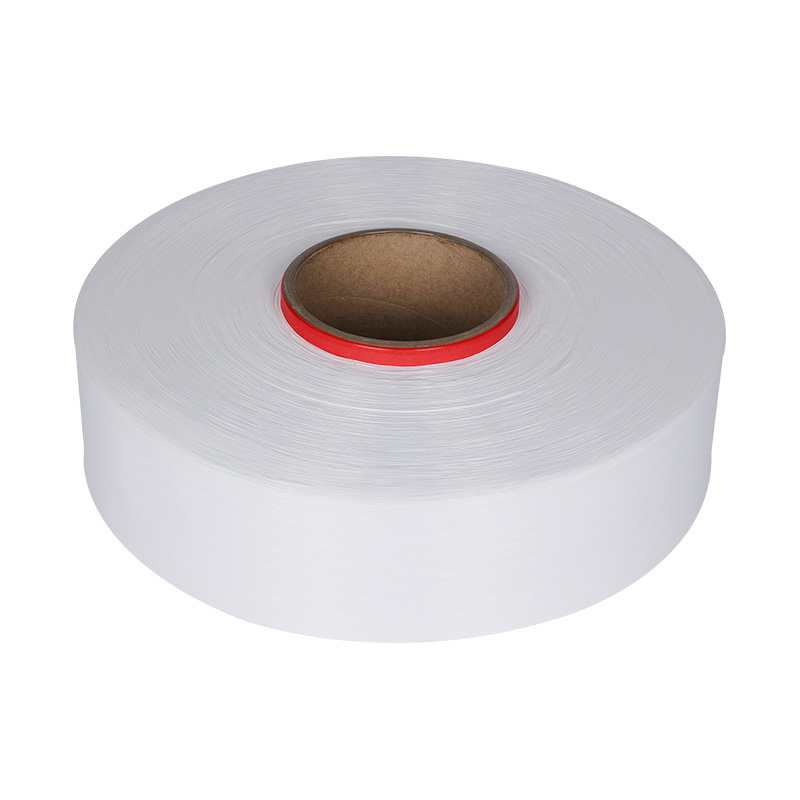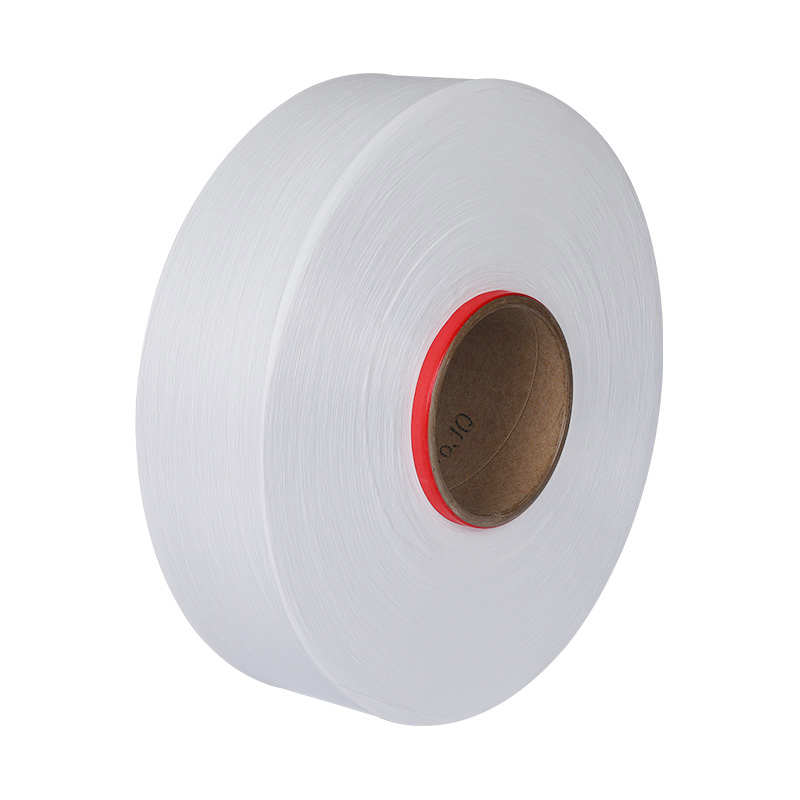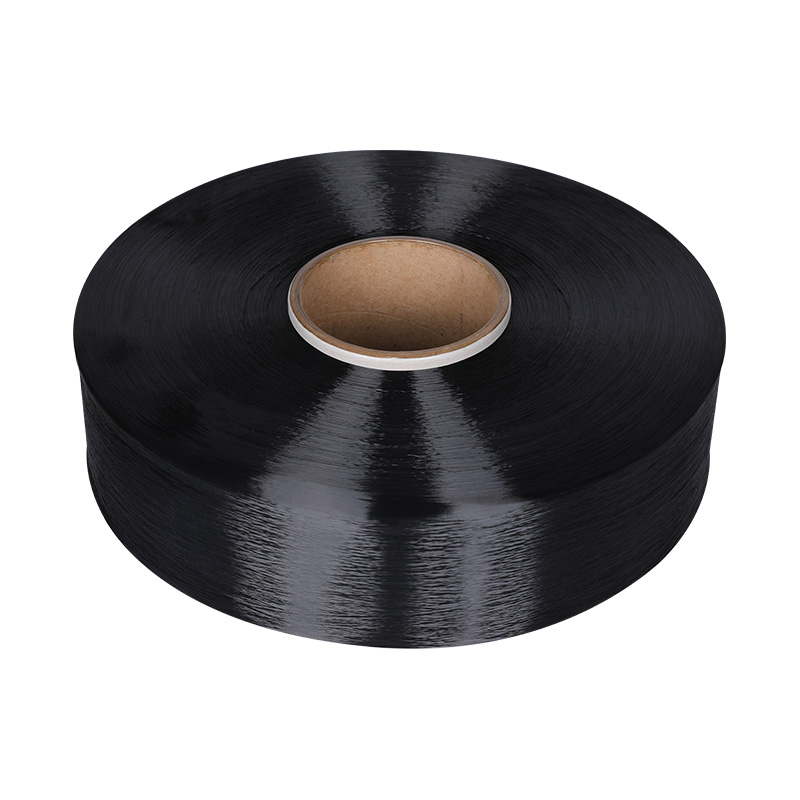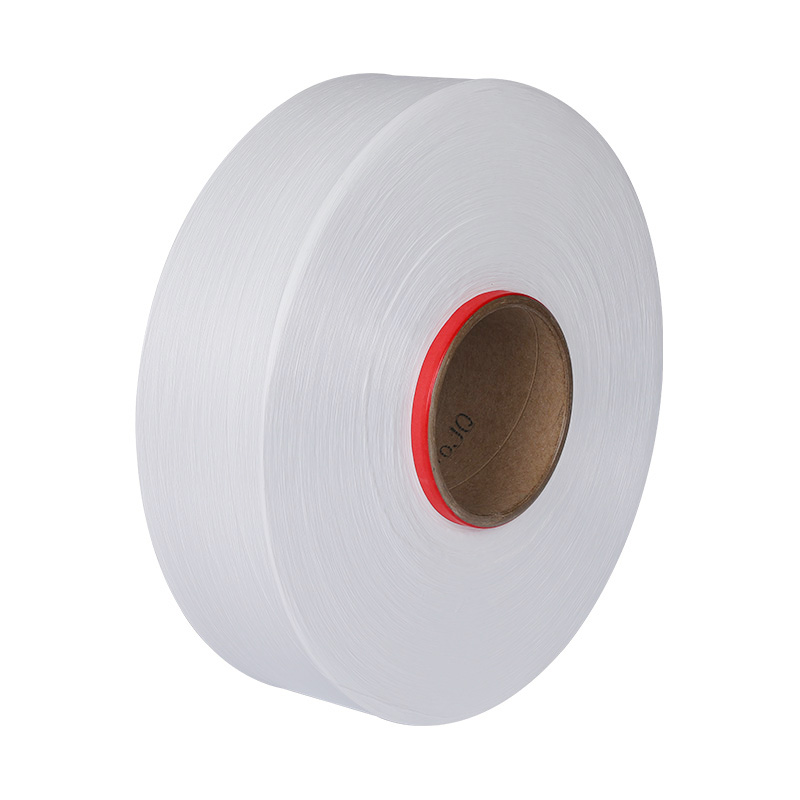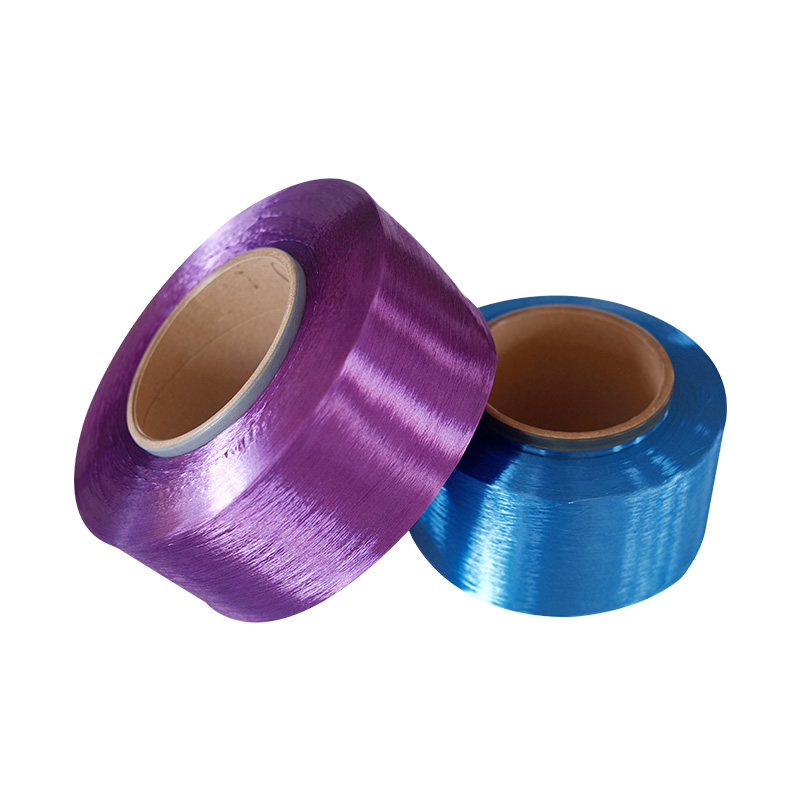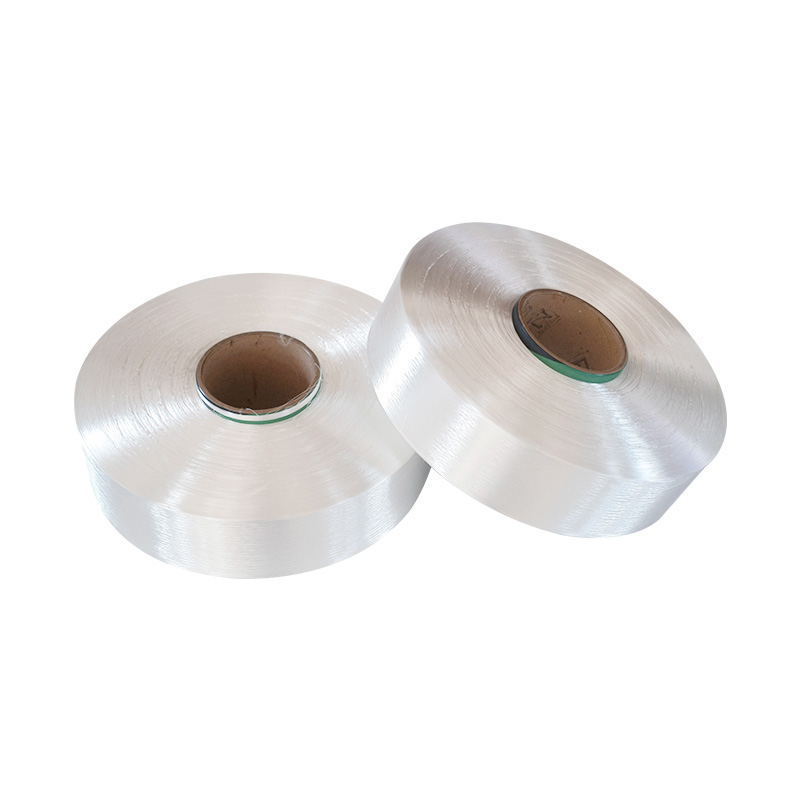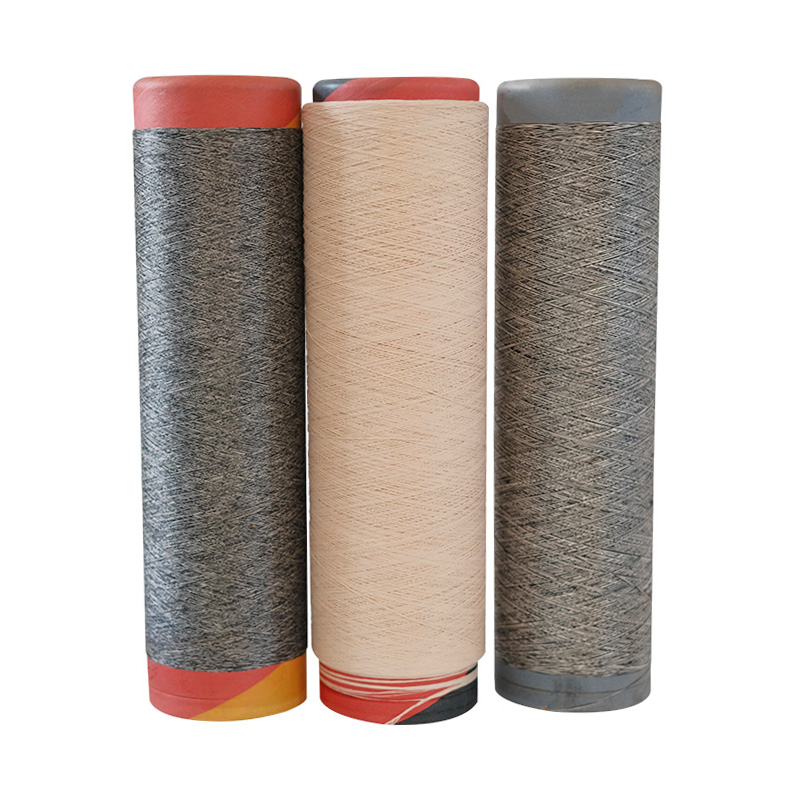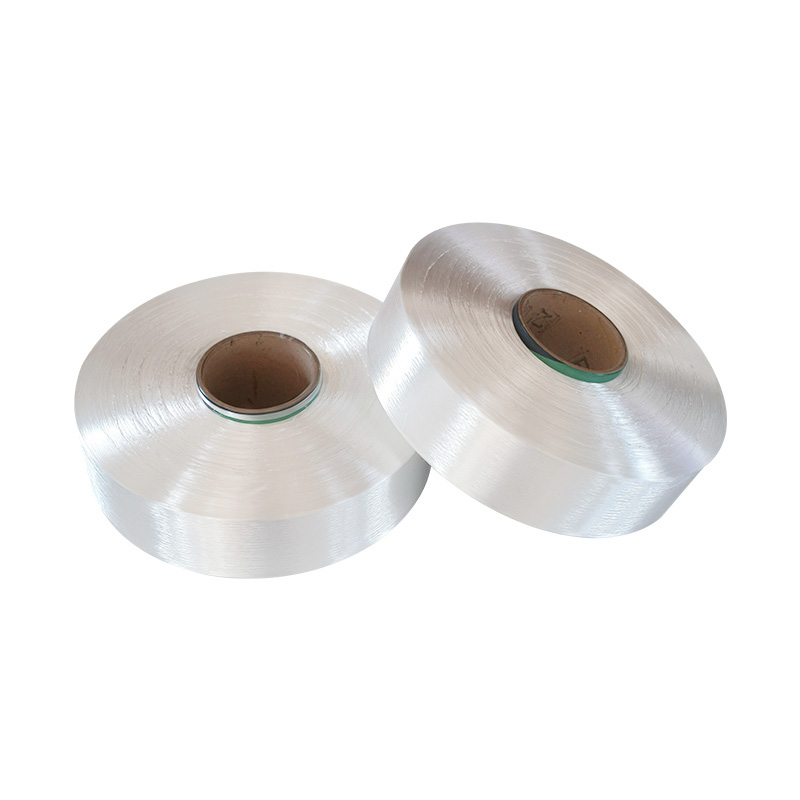DTY yarns, or Drawn Textured Yarns, are a crucial component in the modern textile industry. They transform smooth synthetic fibers like polyester or nylon into yarns with a fluffy, soft feel akin to cotton, all while retaining the strength and durability inherent to synthetics. What makes DTY yarns stand out is their unique ability to merge the high-performance benefits of synthetic fibers with the comfortable touch of natural ones. Unlike their predecessors, POY (Partially Oriented Yarn) or FDY (Fully Drawn Yarn), DTY yarns undergo a texturing process that gives them their distinct crimp, bulk, and elasticity. This means fabrics made from DTY yarns not only offer excellent stretch recovery and wrinkle resistance but also provide superior coverage and warmth, making them indispensable in apparel and home textiles.
The Production Process of DTY Yarns
The journey of a DTY yarn from raw material to a high-performance textile involves a precise, multi-stage manufacturing process.
Starting Material: From POY to DTY
The production of DTY yarns typically begins with POY (Partially Oriented Yarn). POY is a continuous filament yarn that has undergone partial drawing during spinning, resulting in some crystallinity but not yet full molecular orientation. To transform POY into DTY, it must undergo further drawing and texturing.
Key Steps
-
Drawing: This is the initial and crucial step in converting POY into DTY. The POY yarn is drawn over a series of heated and cooled rollers. Under heat, the yarn's molecules become more aligned, significantly increasing its strength, tenacity, and dimensional stability. Precise control of the draw ratio is vital for the final yarn's physical properties.
-
Texturing: This is the core process that gives DTY yarns their distinctive bulk, softness, and elasticity. After drawing, the yarn immediately enters the texturing zone. The most common method is false-twist texturing:
- Heating: The yarn passes through a hot plate or oven at high temperatures.
- Twisting: A high degree of twist is applied to the yarn (usually by a high-speed false-twist spindle).
- Setting: While still twisted, the yarn is cooled and set, which locks in its crimped structure.
- Untwisting: The yarn is then untwisted. Due to the previous setting, the yarn retains a durable, irregular crimp and loop structure, resulting in its bulkiness, elasticity, and soft feel.
Quality Control
Throughout the entire DTY yarn production process, strict quality control is maintained. Manufacturers continuously monitor the yarn's uniformity, breaking strength, elongation, crimp rigidity, and dyeing uniformity. These controls ensure the final product meets high-quality standards and performs excellently in subsequent weaving and dyeing processes. Precise control over temperature, tension, speed, and twist levels is paramount for producing high-quality DTY yarns.

Key Characteristics of DTY Yarns
DTY yarns are highly valued in the textile industry due to a range of unique physical and chemical properties that provide exceptional functionality and broad application potential.
Physical Characteristics
The unique texturing process gives DTY yarns several significant physical advantages:
- Softness and Comfort: One of the most appreciated qualities of DTY yarns is their cotton-like soft hand feel. The numerous micro-crimps and air pockets within the yarn create fabrics that are incredibly skin-friendly and comfortable, making them ideal for intimate apparel and everyday wear.
- Elasticity and Recovery: This is a core strength of DTY yarns. Their distinct crimped structure provides outstanding elasticity and shape retention. Fabrics made from DTY yarns can stretch significantly and quickly return to their original shape, resisting deformation. This makes them perfect for activewear, innerwear, and stretch garments.
- Bulkiness and Volume: The textured structure of DTY yarns results in higher bulkiness and volume. The increased air content within the yarn not only enhances the fabric's insulation properties but also gives it a fuller, more substantial appearance.
- Durability and Wrinkle Resistance: Despite their soft feel, DTY yarns inherit the high strength and abrasion resistance of synthetic fibers. They are less prone to pilling, resist fading, and boast excellent wrinkle resistance, making fabrics easy to care for and requiring less ironing after washing.
Chemical Characteristics
Beyond their superb physical attributes, DTY yarns also exhibit favorable chemical properties:
- Dyeing Performance: DTY yarns generally have good dyeability and excellent colorfastness. This means they can be dyed in a wide array of vibrant colors that remain vibrant and resist fading over time.
- Functionality: With advancements in technology, many DTY yarns are engineered with special functional properties. For example:
- Moisture-Wicking: By modifying fiber structure or adding functional additives, some DTY yarns can quickly absorb and wick away moisture, keeping the wearer dry and comfortable (e.g., certain brands like COOLPASS).
- Antimicrobial: Some DTY yarns incorporate antimicrobial agents to effectively inhibit bacterial growth and reduce odors (e.g., certain brands like COOLFORT).
- UV Protection: Specially treated DTY yarns can offer additional protection against harmful ultraviolet rays.
Type Distinctions
DTY yarns can be further classified based on their structure, denier, luster, and filament count to meet diverse application needs:
- Structural Types: Common types include Single DTY and Intermingled DTY. Intermingled DTY uses an air-jet process to create moderate intermingling points among individual filaments, enhancing yarn cohesion for easier weaving.
- Denier and Filament Count: DTY yarns come in various denier and filament count combinations, such as 75D/36F (75 denier, 36 filaments), 150D/48F (150 denier, 48 filaments), or 300D/96F. Denier determines the yarn's fineness, while filament count affects its softness and coverage.
- Luster: DTY yarns can be Semi-Dull, Bright, or Super Bright. These variations depend primarily on the titanium dioxide (delustering agent) content in the raw material, which in turn influences the fabric's visual effect and sheen.
These diverse characteristics allow DTY yarns to be flexibly applied in a wide range of products, from high-performance athletic wear to comfortable home textiles, making them an indispensable cornerstone of modern textiles.
Application Areas of DTY Yarns
DTY yarns, due to their superior performance, have become an indispensable cornerstone of the modern textile industry, finding widespread use across numerous sectors. Zhejiang Yuwei Chemical Fiber Co., Ltd., established in 2005, is a modern high-tech enterprise integrating research and development, production, and sales. The company focuses on the development, manufacturing, and innovation of differentiated and functional fiber products, committed to providing high-quality chemical fiber products to global customers. As Wholesale HOY Yarns, DTY Yarns, FDY Yarns Suppliers and a China HOY Yarns, DTY Yarns, FDY Yarns Company, Zhejiang Yuwei Chemical Fiber Co., Ltd.'s DTY yarns are a critical component of their product line, widely serving the following key applications:
Apparel Sector
DTY yarns are particularly prominent in the apparel industry, thanks to their excellent comfort, elasticity, and aesthetic appeal:
- Activewear and Casual Wear: The outstanding elasticity and moisture-wicking properties (especially of functional DTYs) make DTY yarns an ideal choice for sportswear, yoga wear, outdoor apparel, and everyday casual clothing. They provide wearers with the necessary freedom of movement while ensuring dry comfort.
- Underwear and Intimate Apparel: Their soft, skin-friendly touch, excellent stretch, and good breathability make DTY yarns a preferred material for bras, underwear, base layers, and other intimate apparel, significantly enhancing wearing comfort.
- Fashion Apparel: DTY yarns impart good drape, wrinkle resistance, and diverse luster effects to fabrics, making them highly desirable for dresses, shirts, trousers, and other fashion garments, offering designers rich creative possibilities.
Home Textiles
DTY yarns also play a significant role in home textiles, offering benefits like comfort, durability, and easy care:
- Bedding, Curtains, Sofa Covers: Due to the soft hand feel, good color retention, and excellent wrinkle resistance of DTY yarns, they are widely used in the production of high-quality bed sheets, duvet covers, pillowcases, curtains, and sofa covers.
- Carpets and Interior Decorations: The bulkiness and durability of DTY yarns make them an ideal material for carpets, throw pillows, and cushions, adding comfort and aesthetic appeal to home spaces.
Industrial Applications
Beyond consumer goods, DTY yarns are also utilized in specific industrial sectors due to their strength and durability:
- Automotive Interiors: Some DTY yarns, after special treatment, can be used for automotive seat fabrics, headliners, and other interior components, providing comfort, abrasion resistance, and a good visual effect.
- Other Industrial Fabrics: Depending on specific requirements for strength, wear resistance, or functionality, DTY yarns can also be customized for filtration materials, luggage fabrics, or as reinforcing fibers in certain composite materials.
Zhejiang Yuwei Chemical Fiber Co., Ltd., with its advanced production equipment, strong R&D team, and stringent quality management system, ensures that its DTY yarns meet the demanding requirements for high quality and functionality across these broad application areas, establishing itself as a benchmark enterprise in the domestic chemical fiber industry.

Future Trends and Innovations in DTY Yarns
DTY yarns are set to play a pivotal role in the future development of the textile industry, with innovations primarily focusing on sustainability, enhanced functionality, and smart integration. These advancements aim to meet the growing demands of global consumers and address the evolving challenges within the industry.
Sustainable Development
As global environmental awareness increases, the textile industry is actively pursuing more sustainable production methods. The future development of DTY yarns will place greater emphasis on:
- Eco-Friendly Production: Promoting energy-efficient and emission-reducing production processes, optimizing resource utilization, and minimizing the environmental impact of manufacturing. This includes adopting more efficient heating and drawing technologies, as well as reducing water and chemical consumption.
- Recycled Materials: Utilizing discarded plastics, especially PET bottles, for recycling and reprocessing to produce recycled DTY yarns. This circular economy model not only reduces waste but also lessens reliance on virgin resources, representing a crucial direction for sustainable DTY yarn development.
- Biodegradable DTY: Although currently in the research and development phase, the creation and application of biodegradable DTY yarns are significant future goals in the chemical fiber sector. Such yarns would naturally decompose at the end of their lifespan, further alleviating environmental pressure.
Enhanced Functionality
Consumer demand for textile functionality continues to grow, driving DTY yarn innovation towards higher performance:
- Smart Textiles: Integrating DTY yarns with conductive fibers, sensors, and other technologies to develop smart textiles capable of monitoring health data, regulating temperature, or emitting light. This opens up immense possibilities for sportswear, medical applications, and specialized workwear.
- Advanced Functionality: Continuously improving the core functions of DTY yarns, such as:
- Highly Efficient Moisture-Wicking: Optimizing fiber cross-sections and surface structures to achieve faster moisture transfer and evaporation, ensuring ultimate dryness and comfort.
- UV Protection: Incorporating special additives or employing specific spinning techniques to enhance the fabric's ability to block ultraviolet rays, protecting the skin.
- Antimicrobial and Antiviral Properties: Developing more durable and effective antimicrobial and antiviral DTY yarns to meet health and hygiene demands.
- Flame Retardancy: Creating DTY yarns with self-extinguishing or flame-retardant properties to enhance textile safety, particularly for protective clothing and home textiles.
Market Outlook
As a versatile and high-performance textile material, the application of DTY yarns in apparel, home textiles, and industrial sectors is expected to continue growing. With ongoing technological advancements and evolving consumer demands, DTY yarns will keep driving innovation and development in the textile industry, bringing more high-performance, eco-friendly, and comfortable products to the market. Their adaptability and cost-effectiveness ensure their enduring and vital role in the global textile supply chain.
 +86-0571-82795522
+86-0571-82795522 
 LANGUAGE
LANGUAGE 
 English
English

